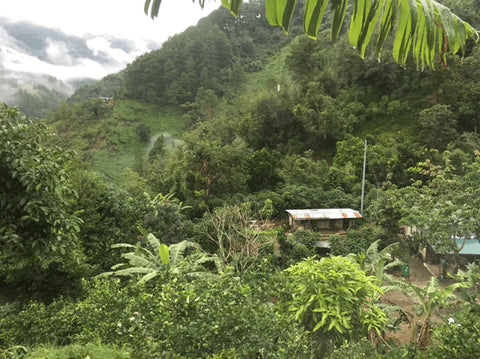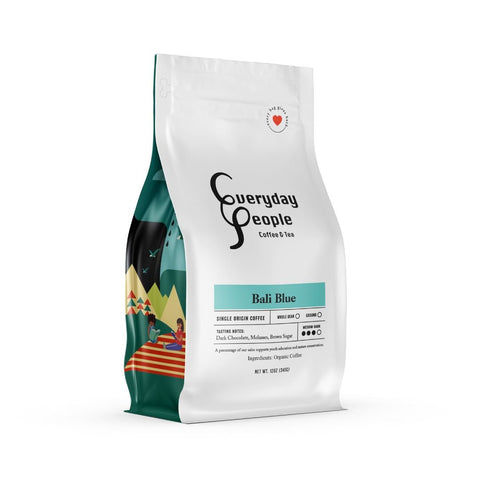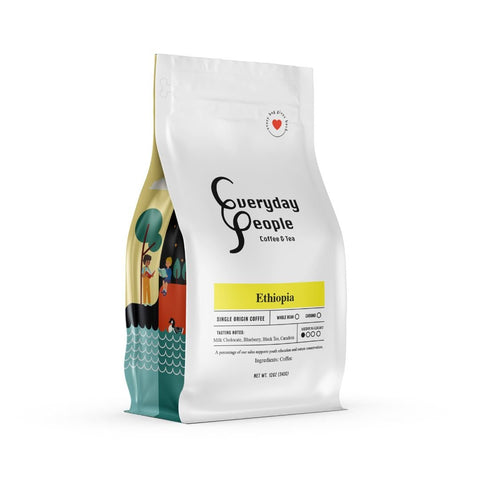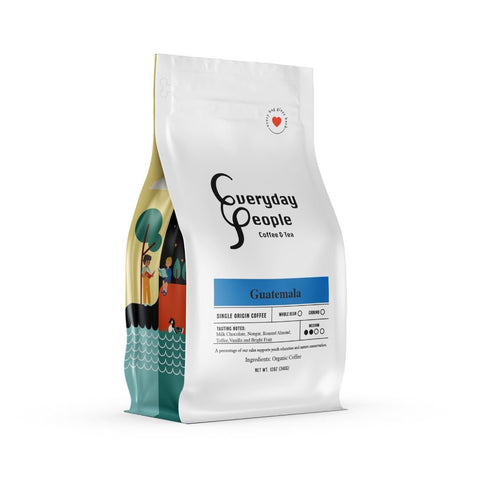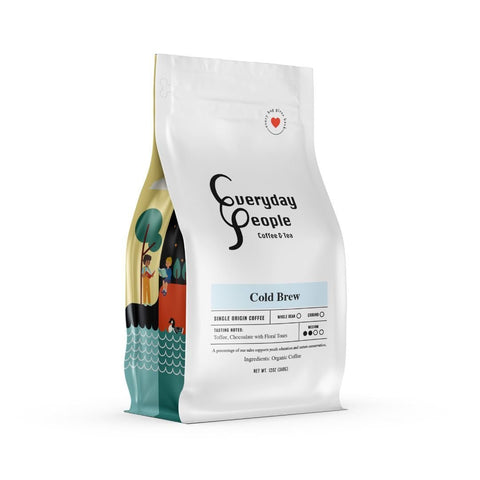Choosing a sustainably-sourced, high-quality coffee can have a major impact on the global ecosystem and your daily coffee experience. The cup of coffee in your hand represents years of cultivation from people all around the world, each playing a crucial role in bringing those rich, complex flavors to your morning routine.
That coffee has been carefully tended by many hands to reach yours – from the farmers who nurture each plant, to the buyers who select the finest beans, importers who transport them across continents, skilled roasters who develop their flavors, and finally the baristas who craft your perfect cup or help you brew at home.
How Coffee Growing Influences Your Cup's Flavor
The growth of coffee at the farm always influences the taste of the coffee in your cup. The land where coffee is grown – its soil composition, climate, and elevation – imparts those unique flavor notes that make each coffee distinct. These flavor notes are the natural aromas and tastes you discover while brewing your coffee, such as hints of cocoa, bright citrus like lemons, or even subtle licorice undertones, all without any artificial flavoring added.
Understanding the Two Main Coffee Species
There are two main coffee species that dominate global consumption: Arabica and Robusta, each offering distinct characteristics that appeal to different preferences and brewing methods.
Arabica Coffee: The Premium Choice
Arabica coffee grows at elevations between 3,000 and 6,000 feet and makes up 60% of global coffee consumption. This high-altitude species commands premium prices due to its wide variety of delicate flavor notes – you might taste hints of cocoa, nuts, or fruit that create the complex profiles found in single-origin coffees at specialty cafes.
However, Arabica's prized flavors come with challenges. This species is more susceptible to diseases like coffee rust and proves more difficult for farmers to cultivate since it thrives only at higher elevations with specific climate conditions.
Robusta: The Hardy Alternative
Robusta, the second main coffee species consumed globally, grows at lower elevations and accounts for 40% of coffee consumption. While Robusta typically has a more robust, sometimes harsh flavor profile, it offers higher caffeine content and greater disease resistance. This makes it popular for lower-priced commodity coffees, instant coffee, and as a component in espresso blends where its strong flavor and crema-producing properties are valued.
The Coffee Journey: From Cherry to Green Bean
All coffee species begin their journey as cherries on farms located in over fifty countries within the "Bean Belt" – a region stretching around the equator encompassing Asia, Africa, Central America, and South America. According to the International Coffee Organization, this region produces over 170 million bags of coffee annually.
Coffee grows in diverse settings, from large commercial plantations to biodiverse agro-forestry systems that support wildlife habitat, or on smallholder, garden-like farms where families have cultivated coffee for generations. The average coffee tree requires approximately 3-4 years from planting to full maturation, representing a significant investment for farmers who dedicate their livelihoods to coffee production.
This extended timeline explains why many coffee farmers join cooperatives, which serve as resource centers and common processing stations where farmers can collectively process and ship their harvest, gaining better access to markets and fair pricing.
The Harvest and Processing Journey
Throughout the growing season, coffee cherries undergo a beautiful transformation, progressing from green to pale red, and finally to bright red when they're perfectly ripe and ready for hand-picking. This careful timing ensures optimal flavor development in each bean.
After harvest, the fruit undergoes processing to remove the cherry and reveal the coffee seed inside. Depending on the farm's climate and resources, processors use various methods including natural processing (where cherries dry with fruit intact), honey processing (partial fruit removal), washed processing (fruit removed before drying), or semi-washed methods.
The processed coffee then moves to the dry mill, where any remaining hulling is completed, leaving behind the green coffee seed – the raw material that will eventually become your roasted coffee. For specialty-grade, high-quality coffee, farmers painstakingly sort through these beans at each processing step, removing any defects that might compromise the overall brew quality and taste.
Once sorted and packed into bags, the green coffee is transported to roasters who apply heat and expertise to transform these green seeds into the aromatic, caramel-colored beans we recognize as coffee.
Our Commitment to Sustainable Coffee Sourcing
Understanding this intricate process and the dedication of people across the world who make coffee possible, we source sustainable, single-origin coffees directly from farmers, ensuring they receive equitable wages to sustain livelihoods that depend on the coffee trade. We're deeply committed to sourcing quality beans that produce exceptional premium coffee blends and single-origin selections.
Our coffee is roasted in a registered and approved FDA facility, adhering to sustainable practices that protect both the environment and the quality of your daily cup. When you choose our coffee, you're supporting fair trade practices that make a real difference in coffee-growing communities worldwide.
The Impact of Your Coffee Choice
Every cup of coffee represents a choice between supporting sustainable farming practices or contributing to exploitative systems. When you select sustainably-sourced coffee, you're investing in environmental conservation, fair wages for farmers, and superior flavor quality that reflects the care taken throughout the entire supply chain.
The next time you enjoy your morning coffee, remember the journey those beans have taken and the many hands that have carefully tended them to create that perfect cup. Your choice to support sustainable coffee makes a meaningful difference in the lives of farmers and the future of coffee production worldwide.
Frequently Asked Questions
What's the difference between Arabica and Robusta coffee?
Arabica coffee grows at higher elevations (3,000-6,000 feet) and offers complex, delicate flavors with notes of cocoa, nuts, and fruit. It makes up 60% of global coffee consumption and commands premium prices, but is more susceptible to diseases. Robusta coffee grows at lower elevations, has a stronger, more bitter flavor with higher caffeine content, and is more disease-resistant. It's commonly used in instant coffee and espresso blends.
How do I know if my coffee is sustainably sourced?
Look for certifications like Fair Trade, Organic, Rainforest Alliance, or Direct Trade on packaging. These indicate the coffee meets specific standards for environmental protection and fair farmer compensation. You can also research the roaster's sourcing practices and look for transparency about their farmer relationships and supply chain.
What are coffee flavor notes and how do they develop?
Flavor notes are the natural tastes and aromas present in coffee without artificial additives. They develop through the coffee's terroir (soil, climate, elevation), processing method, and roasting technique. Common notes include chocolate, citrus, nuts, spices, and floral characteristics. These flavors are inherent to the coffee bean and influenced by every step from farm to cup.
Why does sustainable coffee cost more?
Sustainable coffee typically costs more because it involves fair wages for farmers, environmental conservation practices, smaller batch processing, and often higher quality standards. The extra cost supports better farming practices, worker welfare, and long-term sustainability of coffee production. Many coffee drinkers find the superior flavor and positive impact worth the investment.
How long does it take to grow coffee?
Coffee trees require 3-4 years from planting to full maturation and productive harvesting. This lengthy timeline represents a significant investment for farmers, which is why many join cooperatives for shared resources and market access. Once mature, coffee trees can produce for 20-30 years with proper care.
What's the best way to store coffee beans?
Store coffee beans in an airtight container away from light, heat, and moisture. Keep them at room temperature rather than in the refrigerator or freezer. For optimal freshness, buy whole beans and grind them just before brewing. Use coffee within 2-4 weeks of the roast date for best flavor.
Ready to experience sustainably-sourced coffee? Explore our collection of ethically-sourced, single-origin coffees roasted fresh in our FDA-approved facility.

